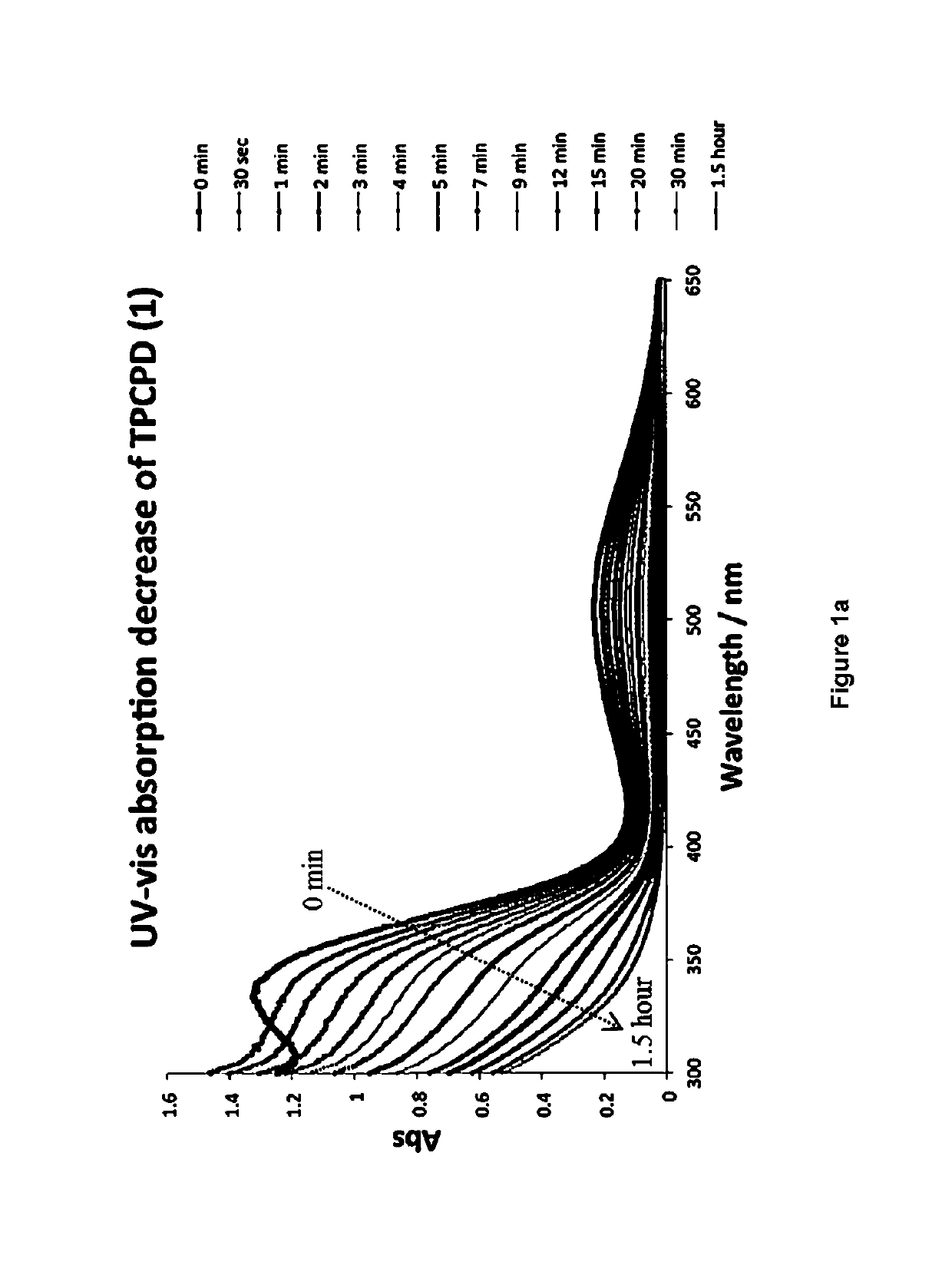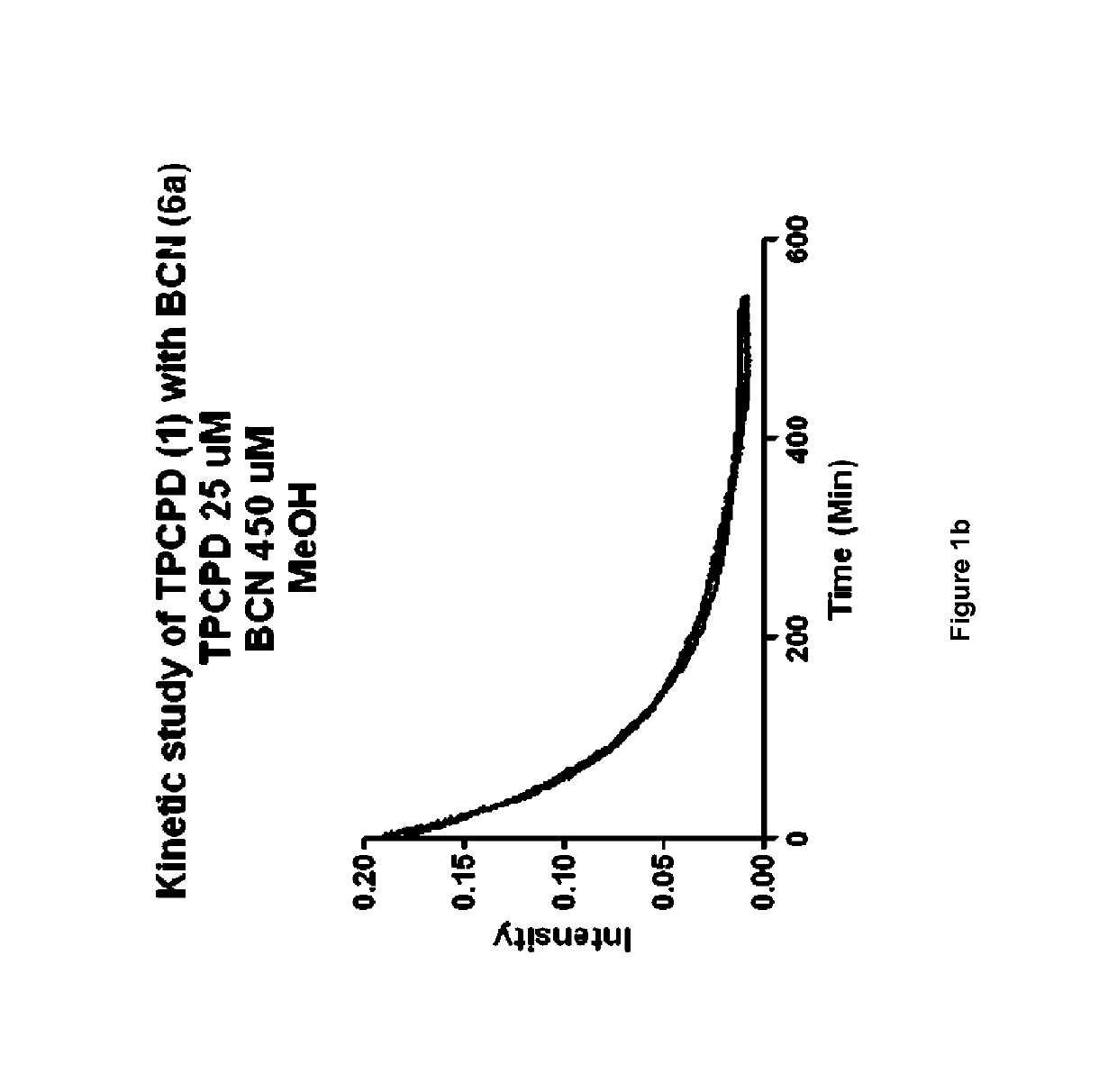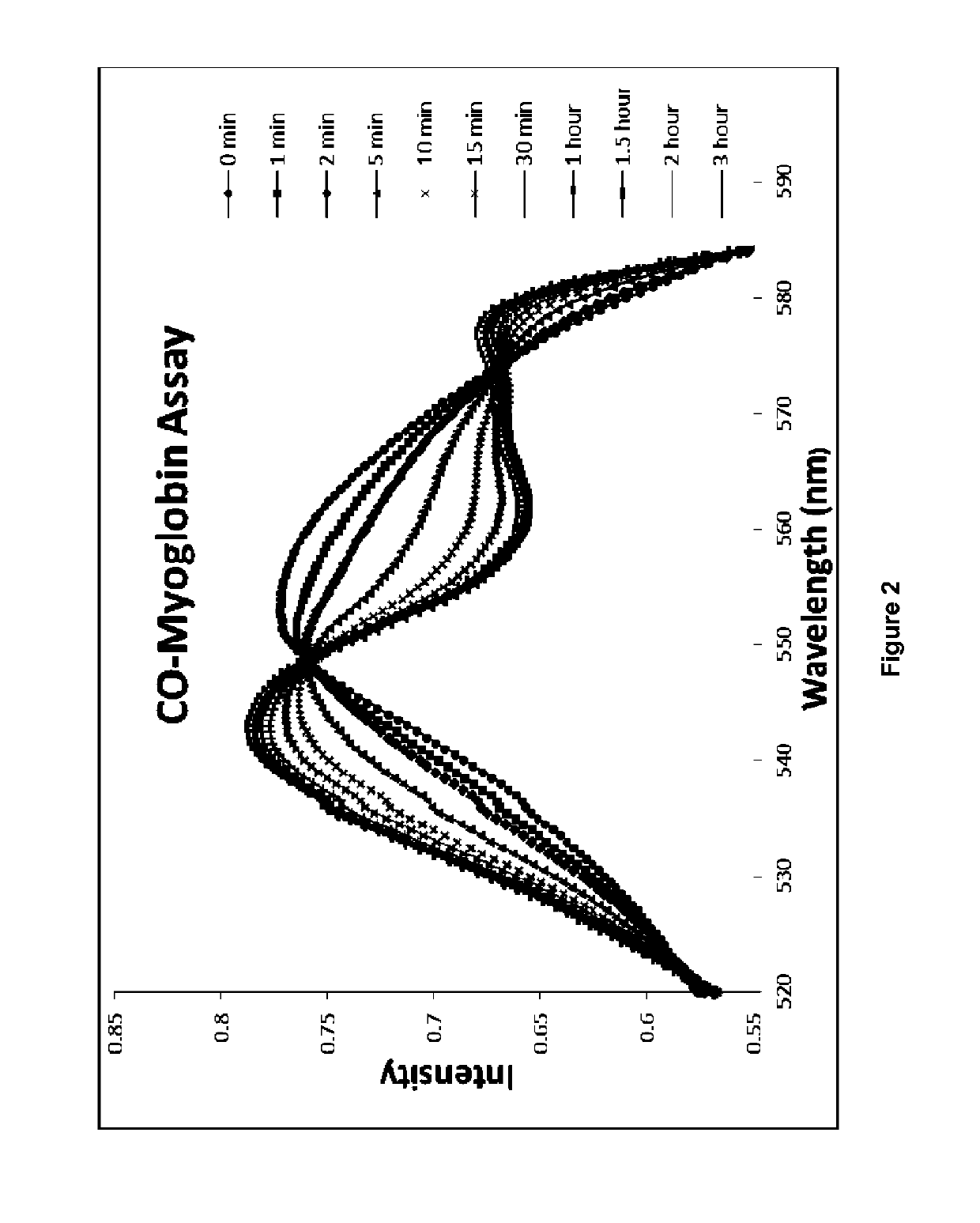Carbon monoxide-releasing molecules for therapeutic applications and methods of making and using thereof
a technology of carbon monoxide and therapeutic applications, applied in the field of molecules, can solve the problems of limited effective and targeted treatment of ibd, toxic gas, and well-known lethal effects of carbon monoxide (co)
- Summary
- Abstract
- Description
- Claims
- Application Information
AI Technical Summary
Benefits of technology
Problems solved by technology
Method used
Image
Examples
example 1
of Carbon Monoxide-Releasing Molecule 30
[0467]A molecule was synthesized that generates a controlled amount of CO at room temperature with tunable reaction rates. This click reaction can be activated under physiological conditions and delivers CO over an extended period of time. The release of CO was demonstrated by the deoxy-myoglobin (deoxyMb) trapping assay and detection by a commercially available CO detector. (Model: Kidde KN-COB-B-LPM). Scheme 12 shows inverse-electron demand Diels-Alder reaction between tetraphenylcyclopentadiene (TPCPD, 1) and dienophiles.
[0468]To a solution of TPCPD (1) in CH2Cl2 (0.5 mL), exo-BCN (6a) in CH2Cl2 (0.5 mL) was added. The reaction was stirred at room temperature for 5 min. The progress of the reaction was monitored by TLC (hexane / ethyl Acetate 1:1, Rf product=0.4). Upon completion, the reaction mixture was directly loaded on the flash column chromatography and purified using hexane:ethyl Acetate 10:1, to give a white solid product. (Yield: 94%...
example 2
of Carbon Monoxide-Releasing Molecules
[0476]In order to facilitate the monitoring of CO release, dienone analogues 2a-2c were synthesized, which reacted with exo-BCN to release CO and to form fluorescent products 31a-31c. Scheme 13 shows the synthetic route to dienones 2a-2c, and their reactions with exo-BCN 6a to form cycloadducts 31a-31c.
[0477]
Preparation of Dienone 2a
[0478]To a solution of compound 8a (1.0 g, 4.76 mmol) and acenaphthylene-1,2-dione (0.87 g, 1 equiv) in ethanol (20 ml), under reflux was added a solution of KOH (0.28 g, 1 equiv) in ethanol (5 ml). After addition, the reaction mixture was stirred under reflux for additional 2 hrs. On cooling, dark precipitate obtained by filtration, was washed with ethanol to afford compound 2a as a dark brown solid (yield: 85%). 1H NMR (400 MHz, CDCl3): δ 8.09 (d, J=7.2 Hz, 2H), 7.89 (d, J=8.0 Hz, 2H), 7.86 (d, J=7.6 Hz, 4H), 7.61 (t, J=7.6 Hz, 2H), 7.55 (t, J=7.6 Hz, 4H), 7.43 (t, J=7.2 Hz, 2H).
Preparation of Dienone 2b
[0479]A sol...
example 3
of Unimolecular Carbon Monoxide-Releasing Molecules
Scheme 14 shows the synthesis of the unimolecular CO releasing compounds.
[0484]
Preparation of Compound 24
[0485]To a solution of compound 23 (2.0 g, 13.9 mmol) and pyridine (2.2 g, 2 equiv) in CH2Cl2 (50 ml) at 0° C. was added a solution of 22 (3.2 g, 1.5 equiv). After the completion of addition, the reaction was warmed to room temperature, and stirred for an additional 3 hrs. The reaction mixture was then washed successively with 5% HCl solution and brine. The organic layer was dried with anhydrous Na2SO4, filtered and concentrated. Thus obtained residue was purified by column chromatography (Hexane: ethyl acetate=2:1) to afford compound 24 as colorless solid (80% yield). 1H NMR (400 MHz, CDCl3) δ 15.35 (s, 1H), 7.44-7.29 (m, 5H), 4.45 (s, 2H), 1.74 (s, 6H).
Preparation of Compound 26a
[0486]A solution of 24 (0.5 g, 1.9 mmol) and N-methylprop-2-yn-1-amine (0.26 g, 2 equiv) in toluene was heated under reflux for 2 hrs. The reaction mix...
PUM
| Property | Measurement | Unit |
|---|---|---|
| Structure | aaaaa | aaaaa |
| Pharmaceutically acceptable | aaaaa | aaaaa |
Abstract
Description
Claims
Application Information
 Login to View More
Login to View More - R&D
- Intellectual Property
- Life Sciences
- Materials
- Tech Scout
- Unparalleled Data Quality
- Higher Quality Content
- 60% Fewer Hallucinations
Browse by: Latest US Patents, China's latest patents, Technical Efficacy Thesaurus, Application Domain, Technology Topic, Popular Technical Reports.
© 2025 PatSnap. All rights reserved.Legal|Privacy policy|Modern Slavery Act Transparency Statement|Sitemap|About US| Contact US: help@patsnap.com



